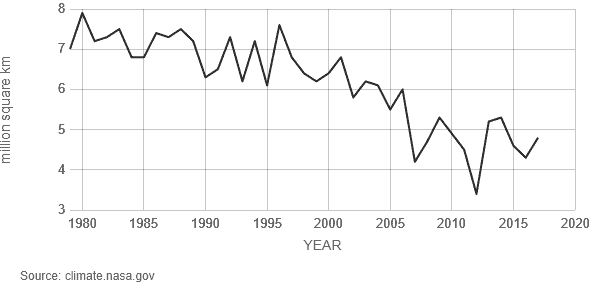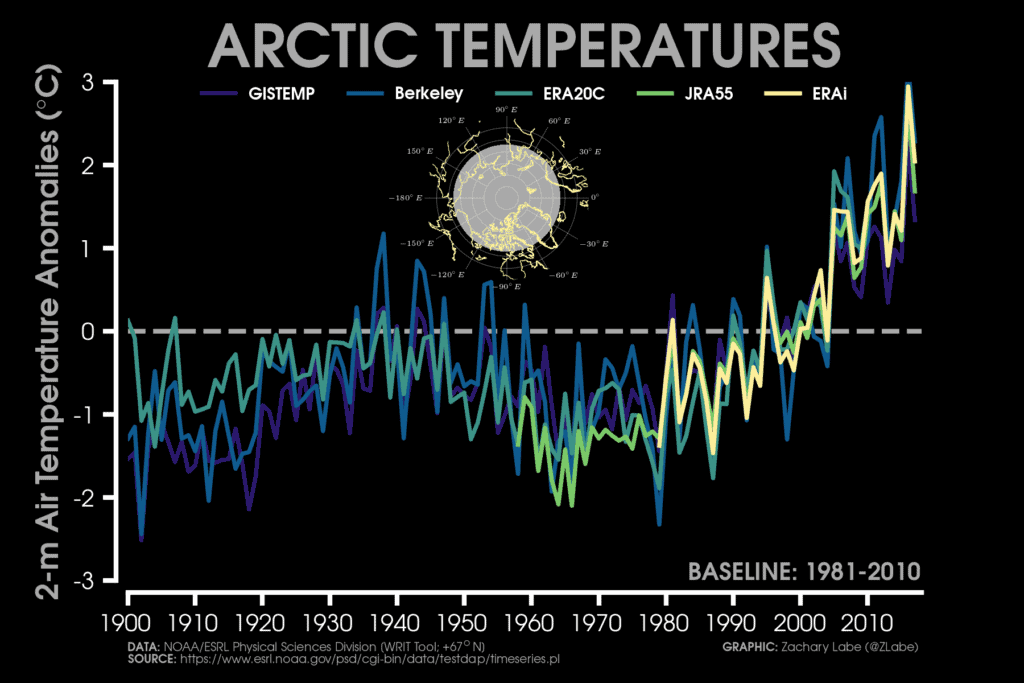For decades, global warming has been slowly chipping away Arctic ice, so much that since 1979, the region lost 620,000 square miles (1.6m square kilometers) of winter sea ice cover — an area more than twice the size of Texas. September Arctic sea ice is now declining at a rate of 13.2 percent per decade, relative to the 1981 to 2010 average. To make matters worse, a new study reports that the Arctic’s thickest and oldest ice is now breaking up due to warming, a “scary” event, one scientist says, that will force us to rethink which parts of the Arctic will (inevitably) melt last.

Since scientists started keeping records, sea ice in the north of Greenland has never broken up — this year it happened twice!
Normally, the sea north of Greenland is so cold that it stays frozen stiff. Scientists have always assumed that if the Arctic ever completely melt — estimated to occur in the late 2030s — then this region will be the last to do so. But this bastion has proven to be far less resilient than some had hoped.
Abnormal heat waves in Europe, such as the temperatures spikes in February and earlier in August, have brought hot winds to Greenland, which have pushed the ice further away from the coast than at any time since satellite imagery began in the 1970s.
“Almost all of the ice to the north of Greenland is quite shattered and broken up and therefore more mobile,” Ruth Mottram of the Danish Meteorological Institute told The Guardian. “Open water off the north coast of Greenland is unusual. This area has often been called ‘the last ice area’ as it has been suggested that the last perennial sea ice in the Arctic will occur here. The events of the last week suggest that, actually, the last ice area may be further west.”
Arctic sea ice is once again pulling away from the coast of far northern Greenland. You can easily see this reflected in the current drift circulation: https://t.co/BkhAkJipgm. Sea ice extent in the Greenland Sea has been at or near a record low for most of 2018. pic.twitter.com/zvOEyNpHut
— Zack Labe (@ZLabe) August 6, 2018
Northern Greenland ice is usually compacted by the movement of winds and currents like the Transpolar Drift Stream. The transported ice gets pushed from Siberia across the Arctic to the coastline, where it packs — it’s akin to a crowd entering a stadium or growing mounds of ice left on city streets by a snowplow. What you end up with is some long-lasting, thick ice that can be piled up into ridges 20 meters thick or more.
Such ice is not easily moved around but weather conditions this year showed that it’s possible.
So the open water / low concentration patch North for Greenland is still there (and slowly moving westward). Nice and scary. From https://t.co/jPx1JmNayA https://t.co/hGstLYafcW
— Thomas Lavergne (@lavergnetho) August 13, 2018
The findings reported by the researchers at the US National Snow and Ice Data Center suggest this recent worrisome ice movement is caused by global warming. The authors of the report also point out that the Arctic — with its currents, ice flows, and wind patterns — also influences the weather in the northern hemisphere.







